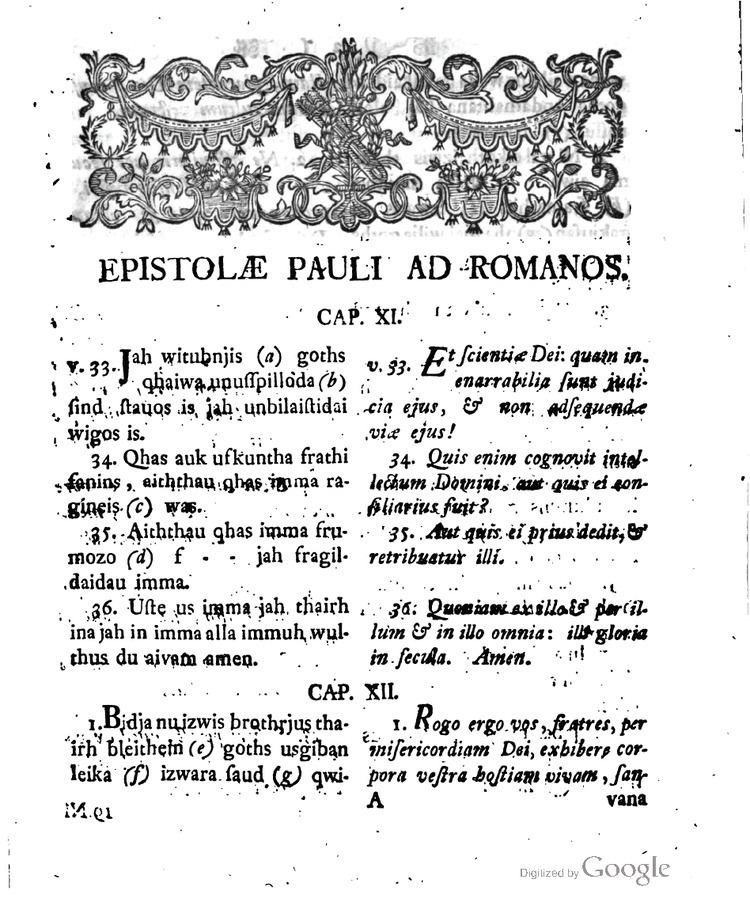Name Franz Knittel | Died December 10, 1792 | |
 | ||
Franz Anton Knittel (April 3, 1721 – December 10, 1792), was a German, Lutheran orthodox theologian, priest, and palaeographer. He examined palimpsests' text of the Codex Guelferbytanus 64 Weissenburgensis and deciphered text of Codex Carolinus. He was the author of many works.
Contents
Life
In 1751 he became a priest, in 1753 Archdeacon of the main church in Wolfenbüttel. In 1766 he became general superintendent and the first preacher in Wolfenbüttel and in 1776 general superintendent in Brunswick. After receiving work in the main church of Wolfenbüttel Knittel started to examine manuscripts housed in the Ducal Library of Wolfenbüttel. In 1756 he studied the Codex Guelferbytanus 64 Weissenburgensis. The manuscript and its palimpsest text had earlier been examined by Heusinger, who described it in 1752, but Knittel was the first who recognized that the palimpsest Greek text belonged to two different manuscripts of the New Testament. Knittel designated these two texts by sigla A and B. He recognized also lists of the κεφαλαια (chapters) as another, the third Greek manuscript. Knittel also deciphered and reconstructed the Gothic-Latin text of the palimpsest and published it in 1762 at Brunswick. It is known as Codex Carolinus. The upper text of palimpsest contains text of Isidore of Seville's Origines and his six letters. Knittel designated it by siglum E and dated it to the 11th century.
Knittel made many errors in deciphering the palimpsest's text, especially in the Latin text of Codex Carolinus (e.g. enarrabilia for scrutabilia). Tischendorf made a new and more accurate collation for the Latin text (edited in 1855). A new collation of the Gothic text was published by Carla Falluomini in 1999. Knittel examined also other manuscripts (e.g. Minuscule 126, 429).
Knittel defended a traditional point of view in theology and was against the modern textual criticism. He defended an authenticity of the Pericopa Adulterae (John 7:53-8:11), Comma Johanneum (1 John 5:7), and Testimonium Flavianum. According to him Erasmus in his Novum Instrumentum omne did not incorporate the Comma from Codex Montfortianus, because of grammar differences, but used Complutensian Polyglotta. According to him the Comma was known for Tertullian.
